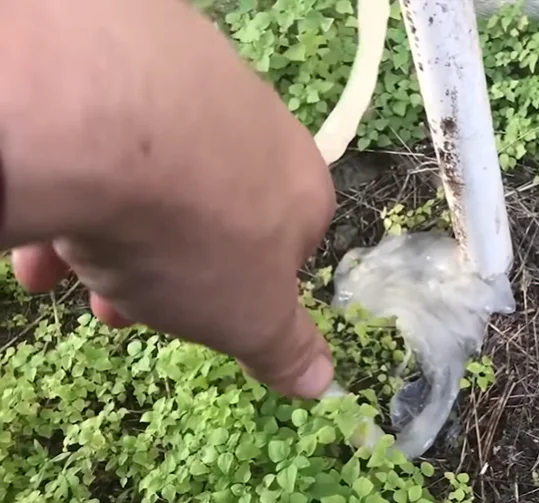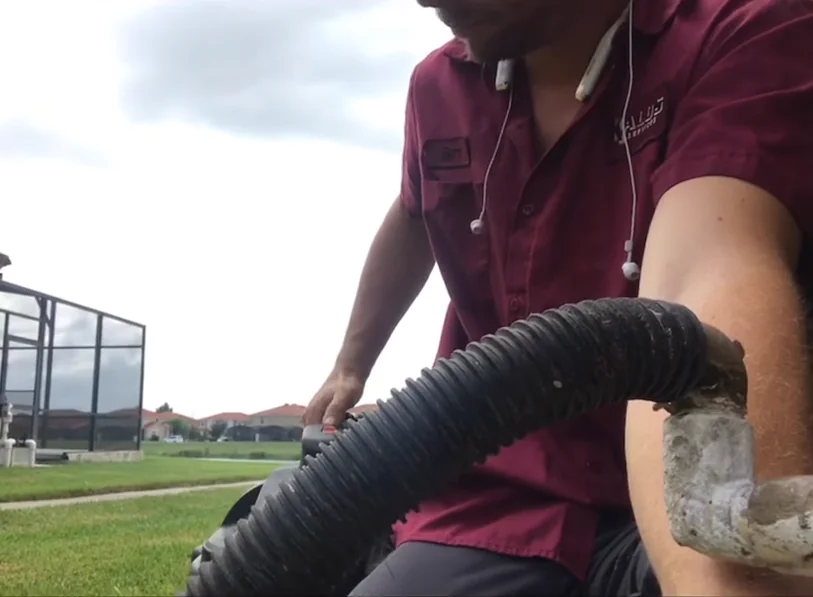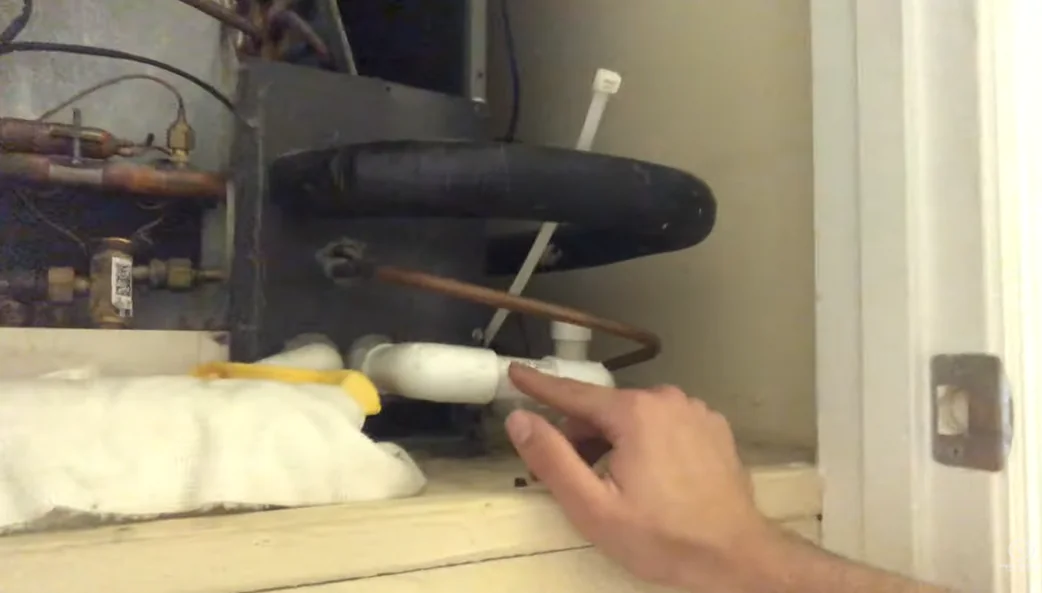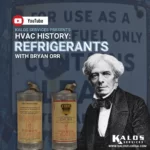One of the most common issues we see on residential and light commercial A/C units is a backed-up drain line. In our other tips, we stress the importance of having a good maintenance plan in place to prevent drain issues. But what about DIY drain cleaning?
That’s where things can get tricky. Although you can clean your drain line by yourself, some cleaning practices can cause more harm than good. It’s also not reasonable to expect homeowners to be willing to take apart and rebuild drains in cases of severe blockages, so we generally recommend against doing extensive drain cleanings yourself.
We’re going to cover some not-so-great drain cleaning advice and why you want to avoid it, cover minor drain cleaning procedures that you CAN do at home, and explain why you may want to consider enrolling in a preventive maintenance plan.
Table of Contents
PUT AWAY THE BLEACH
You may have heard (or figured out) that bleach is a reasonable cleaner to use in drain lines. After all, it kills nasty bacteria and fungi in the drain, right?
While bleach does kill bacteria and fungi, we do NOT recommend using it to clean out your A/C drain. Your evaporator coil right by your drain is made of aluminum, which corrodes when bleach comes into contact with it. If the drain has a clog in it, the bleach can back up into the drain pan right by the evaporator, which can cause the evaporator to blacken. We’ve recently seen the rise of all-aluminum evaporator coils, which would be severely affected by bleach.
We also have a unique problem in Florida called bacterial zoogloea, which is a whitish slime that rapidly builds up in our drain lines and pans. To stop bacterial zoogloea from wreaking havoc on your A/C drain, some technicians put copper in A/C drain pans because the copper ions prevent bacterial growth. Bleach also corrodes copper, so it’s not a good idea to introduce it to your drain.

So, for the sake of your evaporator, we would advise you not to use bleach for a DIY drain cleaning. But the evaporator is a lot less important than your own body.
Bleach can also hurt irritate your skin and eyes. Even worse, it can harm your respiratory system by irritating your lungs. Exposure to bleach can worsen asthma, which can be a serious concern if you have asthmatic children in your home. So, it’s also not a great idea to use it in your A/C drain line for your own health and safety.
CLEANING WITHOUT CHEMICALS
In general, we like to avoid using chemicals whenever possible. We carry a few non-toxic chemicals on our trucks when we clean drains for customers, but these are typically not available to the general public. Even so, we recommend using two things to clean drains: water and a shop vacuum.
You simply hook up the shop vac to the drain outlet (near your outdoor A/C unit). Make sure it fastens to the drain tightly. Then, you turn it on.
When you go inside by the air handler, simply uncap the cleanout and pour water into the drain. The flowing water combined with the suction of the shop vac can do a decent job of cleaning the drain. If you can see a buildup of gunk, you might even consider using a bottle brush to clean the areas you can reach. When you finish, you can simply let the water finish going through the drain, turn off the shop vac, unhook it, empty it out, and put it away.
You can pour a bit more water into the drain to make sure it flows out. (It’s best to do that with another occupant; have one person pour the water and have the other person watch for it to come out of the drain.) Then, you can cap the cleanout. (Don’t cap the vent! The cleanout is before the trap and can be capped; the vent is after the trap and must stay open.)
Of course, DIY drain cleaning is not the same as having a professional come in and do it routinely, but it should help keep your drain from backing up.
WHAT CAN A PROFESSIONAL DO TO HELP?

In some cases, there will be a lot of gunk buildup in places that aren’t easy to access and clean. In those cases, HVAC professionals may need to cut open and redo the drain piping.
HVAC professionals also have other drain cleaning tools at their disposal, including compressed air (or nitrogen). These tools can be tricky and require a knowledgeable professional to handle them without causing damage. HVAC technicians can do a more thorough job of cleaning the main drain line and smaller areas as well, including small channels on the evaporator coil.
When you have a common drain, which is where several drains feed into a single large drain, it’s best to have an HVAC technician handle the cleaning process. These drains are in many types of multi-family housing, including apartment complexes and condos. These don’t have a nice little drain outlet like on the outside of a house, so it’s best to make sure a professional can handle the cleaning procedure.
In the light commercial HVAC market, we recommend scheduling preventive maintenance procedures in the spring and fall. Drain cleaning is usually included (it is at Kalos), and a maintenance plan is far less expensive than a drain-related service call. Our premium maintenance packages for residential units cover TWO A/C maintenance per unit per year, and drain cleaning comes with the service.






